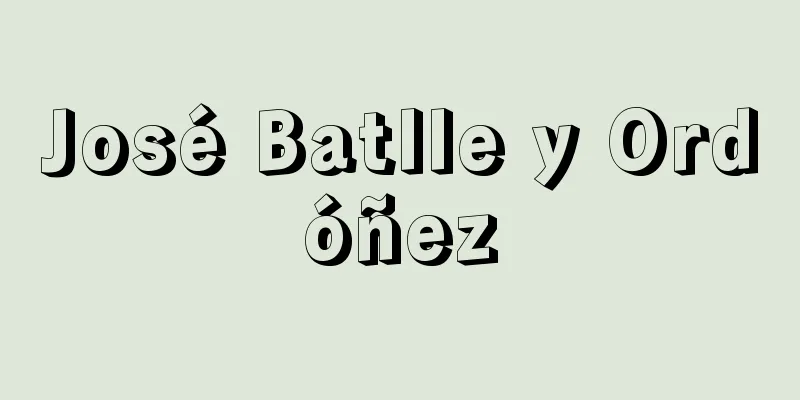Caracci, Annibale - Caracci

|
…An Italian family of painters. They overcame Mannerism, paved the way for the new style of the 17th century, and founded the so-called Bolognese School. The best-known brothers were Ludovico C. (1555-1619) and his cousins Agostino C. (1557-1602) and Annibale C. (1560-1609). The three brothers first shared a studio in their hometown of Bologna, and in 1582 founded the Accademia (art school). They placed importance on sketches of models, and took the color expression and naturalistic tendencies of Correggio and the Venetian school as their models, aiming to reform the art of the time, which had fallen into the repetition of empty forms and the pursuit of the fantastic. … From [Caricature]...The same diversification was also seen in J. Caro's prints of exaggerated dwarfs, clowns, and beggars. In the early 17th century, Annibale Carracci and the Bolognese painter and sculptor Bernini produced drawings that emphasized the personalities and facial features of the figures. In the Netherlands, C. Dussart showed comical exaggerations of manners and customs, while R. de Hoge painted satirical portraits of current affairs, and in 18th century Rome, PL Ghezzi painted humorous portraits. From [Baroque Art]...In other words, by recognizing Mannerism between the Renaissance and the Baroque, it became clear that the Baroque attempted to sublate the anti-classical direction of Mannerism and partially restore the order and form of the Renaissance. This is evidenced by the fact that Rubens, Carracci, Pietro da Cortona, Poussin, and others, who are also called the "Neo-Venetian School," were most deeply influenced by the Venetian School of the first half of the 16th century, especially the art of Titian. Rembrandt and Velázquez also had close ties to the Venetian School. *Some of the terminology explanations that mention "Annibale" are listed below. Source | Heibonsha World Encyclopedia 2nd Edition | Information |
|
…イタリアの画家一族。マニエリスムを克服し17世紀の新様式への道を開いて,いわゆるボローニャ派を創始した。ルドビコLudovico C.(1555‐1619)とその従弟アゴスティノAgostino C.(1557‐1602),アンニバレAnnibale C.(1560‐1609)の兄弟が知られ,3人は最初郷里のボローニャに共同のアトリエを構え,1582年,アカデミア(画塾)を設立。モデルの写生素描を重視し,またコレッジョやベネチア派の色彩表現や自然主義的傾向を範として,空疎な型の繰返しと奇想の追求に陥っていた当時の美術の改革をめざした。… 【カリカチュア】より…またその多様化は矮人,道化,乞食を誇張して版画化したJ.カロにも現れる。 17世紀初めにはアンニバレ・カラッチおよびボローニャ派の画家,彫刻家ベルニーニらが人物の性格や表情の特徴を強調した素描を残す。オランダでは風俗のコミカルな誇張をみせるC.ドゥサルト,時事問題を風刺的に描くR.deホーヘがおり,18世紀ローマには滑稽な肖像を描くP.L.ゲッツィがいる。… 【バロック美術】より…すなわち,ルネサンスとバロックの間にマニエリスムを認めることによって,バロックはマニエリスムの反古典的方向を止揚し,ルネサンスの秩序と形式を一部回復させようとしたものであることが明らかになった。このことは,ルーベンス,カラッチ,ピエトロ・ダ・コルトナ,プッサンなどが〈新ベネチア派〉とも呼ばれているように,16世紀前半のベネチア派,とくにティツィアーノの芸術からもっとも深い影響を受けていたことによって証明される。レンブラント,ベラスケスもまたベネチア派と深い関係をもつ。… ※「カラッチ,Annibale」について言及している用語解説の一部を掲載しています。 出典|株式会社平凡社世界大百科事典 第2版について | 情報 |
Recommend
White Cloud Sect - Hakuunshu (English spelling) Bo-yun-zong
A lay Buddhist sect that flourished in China from ...
Pinicola
…Originally it was another name for the Japanese ...
Sun Yat-sen Mausoleum
The tomb of Chinese revolutionary Sun Yat-sen. Zh...
Kawaguchi Onkai
...Also called "taishokin." Invented in...
Bank of Korea - カンコク銀子(English) Hanguk ǔnhaeng
A representative bank in Korea at the end of the J...
Energy elements
...However, H. Rubens and others pointed out that...
Hamagiku (Chrysanthemum nipponicum) - Hamagiku (English spelling)
A perennial plant of the Asteraceae family that gr...
Right to examine witnesses
One of the rights guaranteed to criminal defendant...
Salt isomer - Enysei
An isomerism phenomenon that occurs due to differ...
Ageuta - Ageuta
One of the names of musical components of Heikyoku...
Projection television
A projection type image receiving device that can ...
Tejima Toan
Year of death: 9th February 1786 (8th March 1786) ...
Tsugaruishi River
A river that flows north through central-eastern ...
ADR - ADR
A general term for a method of settling everyday d...
nous
...It is only possible that humans know other thi...









